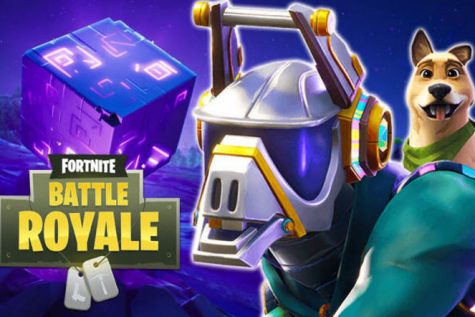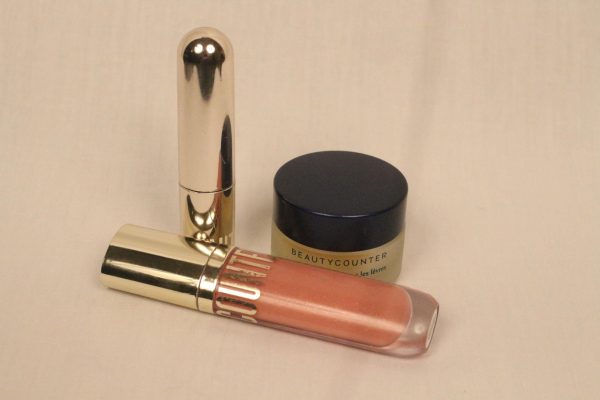Check your six: Fortnite’s newest season is here

Photo courtesy of Google under the Creative Commons license
Fortnite, the wildly popular, multi-platform, battle royale video game, just had its fifth major update with the start of its sixth season. Battle royale games have, over the past year, exploded in popularity; depending on the game, between ten and 100 players simultaneously drop onto a map, unarmed and unshielded. Players must then search treasure chests, supply drops, buildings and other points of interest to find weapons and shields before clashing with other players across the map. With the beginning of each season, players are given the option of purchasing the Battle Pass, which provides players with over 100 levels of cosmetic rewards — including character skins, gliders, ‘backblings’, dances, sprays and toys — throughout the 10-week season, which they earn by completing challenges and playing the game. According to Michael Pachter, game analyst, 5 million copies [of the Battle Pass were] sold on the first day of season three, likely due to its affordability and incentivization it offers buyers to play the game. Since season three, the number of people playing Fortnite has only increased, reaching a new high of 78.3 million players in August, according to a blog released by Epic Games, creators of Fortnite. While it is apparent more and more players are coming to Fortnite, there is a variety of things that the developers must do in order to maintain the game’s success.
The beginning of season six marks an important juncture in Fortnite and its sustained popularity. A multi-season storyline was initiated at the end of season three, and it is speculated that it will come to a close at some time during season six. Up to this point, there have been no comparable storylines in other video games of the ‘battle royale’ genre. Andrew Webster, game editor at The Verge, reaffirmed this notion in a recent article.
“Epic has become a master of environmental storytelling,” Webster said. “There are plenty of games that have emulated the core battle royale aspect that has made Fortnite so popular, and it seems likely we’ll see the same thing happen with its take on storytelling and live events.”
Since their launch in Sept. 2017, Fortnite has made $1 billion in in-game sales. For this reason, it is likely that Fortnite will continue to evolve into a ‘welcoming’ game, or a place where players feel more comfortable spending and investing their money via in-game sales because the game feels relatively easy and enjoyable.
However, this ingenuity has recently been met with dissatisfaction from the player base, including students at KHS. Although 59 percent of KHS students have played Fortnite (217/370), only 6 percent of KHS students play the game for more than three hours a week. This falls in line with people who believe that the game is “dying” or losing a significant number of players who consistently play the game, as those people often gradually play the game less over time. These feelings have been echoed often enough by YouTubers, Reddit posters and Twitter users that Tyler ‘Ninja’ Blevins, a record-breaking Twitch streamer and professional gamer, felt inclined to address the issue in one of his streams.
“It’s these little kids that try to sound cool and hop on to ‘the game is dying’ bandwagon,” Blevins said. “They write YouTube comments and make Reddit posts and then little kids see it and maybe they stop playing because of that comment.”
Typically, players complain that Fortnite’s evolution into a “spray and pray” game (directively focused on ‘blooming’ accuracy, where the player has less control on a gun’s accuracy) and the alterations of the effectiveness of Fortnite’s building mechanics show Epic’s dedication to tailor the game to less-skilled players, rather than its professional and regular players. Although it has been frustrating, especially as a regular player of the game, to see changes progressively close the game’s skill-gap, Epic does a good job of listening to community feedback and remedying problems via their weekly content updates. The problems of oversaturation of content and maintaining balance among weapons only arise when Epic ignores this feedback, such as their increasing the duration between swapping weapons after firing (particularly with shotguns). These changes are, existentially, simply developments of the game instituted to keep players engaged and actively playing the game; Fortnite needs to limit the rate of these updates (currently weekly), though, and instead release balanced, skill-based weapons, consumables or vehicles that truly innovate the game and make it better, as opposed to just swapping things out periodically.

As the sun set on season five, Epic Games seized their opportunity to significantly alter the core gameplay of Fortnite by ‘vaulting’ (temporarily removing) some of these “spray and pray” guns, including the light machine gun and suppressed submachine gun. Furthermore, the introduction of a new type of item, shadow stones, into the game furthers their ambitious aspirations to provide a balanced, entertaining arena for players of all skill levels. In the end, much of what Epic Games will implement into the game will be predicated on money. In an April 2018 demographic report of Fortnite’s playerbase (surveying players ages 18 to 54), it was found that 63 percent of players are 18-24. While there are players much younger than 18, it is clear that the pre-adult population is the targeted age group of Fortnite. According to Samantha Davies, user research lead of Monzo, an online bank, in a report released by the online bank Monzo, teenagers and children commonly spend their money on arbitrary or intangible things, which makes them susceptible to creative marketing techniques, which video game companies love to interweave into their games. Fortnite has exploited this willingness wholeheartedly by creating unique, cartoonish cosmetics, and their strategies have worked so far. Since their launch in Sept. 2017, Fortnite has made $1 billion in in-game sales. For this reason, it is likely that Fortnite will continue to evolve into a ‘welcoming’ game, or a place where players feel more comfortable spending and investing their money via in-game sales because the game feels relatively easy and enjoyable. Although this business technique is immensely profitable for companies like Epic Games, it generally leads to a gradual decline in the game’s popularity and frequency of updates paramount to actually improving the game.
No matter how invested you are in Fortnite — from those who spend thousands of dollars buying character skins to those who play the game for free —it is clear that the game’s fluidity and active team of developers will continue to innovate how the game is played, leaving the community chronically unsatiated and hungry for changes. By the end of season six, Fortnite will have to maintain some level of continuity, otherwise business may not be booming much longer.
Your donation will support the student journalists of Kirkwood High School. Your contribution will allow us to purchase equipment and cover our annual website hosting costs.

he/him
Favorite musical artist: Polo G
Favorite quote: "Vivere memento."
Favorite Pantone shade:













Epic Gamer • Oct 11, 2018 at 6:23 pm
Ok so basically this is so epic. Thank you for spreading information about how gamers need to rise up.